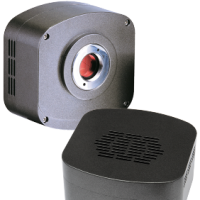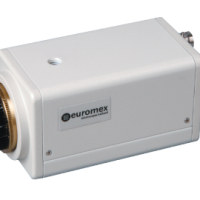A charge-coupled device (CCD) is a device for the movement of electrical charge, usually from within the device to an area where the charge can be manipulated, for example conversion into a digital value. This is achieved by “shifting” the signals between stages within the device one at a time. CCDs move charge between capacitive bins in the device, with the shift allowing for the transfer of charge between bins.
In recent years CCD has become a major technology for digital imaging. In a CCD image sensor, pixels are represented by p-doped metal-oxide-semiconductors (MOS) capacitors. These capacitors are biased above the threshold for inversion when image acquisition begins, allowing the conversion of incoming photons into electron charges at the semiconductor-oxide interface; the CCD is then used to read out these charges. Although CCDs are not the only technology to allow for light detection, CCD image sensors are widely used in professional, medical, and scientific applications where high-quality image data are required. In applications with less exacting quality demands, such as consumer and professional digital cameras, active pixel sensors, also known as complementary metal-oxide-semiconductors (CMOS) are generally used; the large quality advantage CCDs enjoyed early on has narrowed over time.
Showing all 2 results


